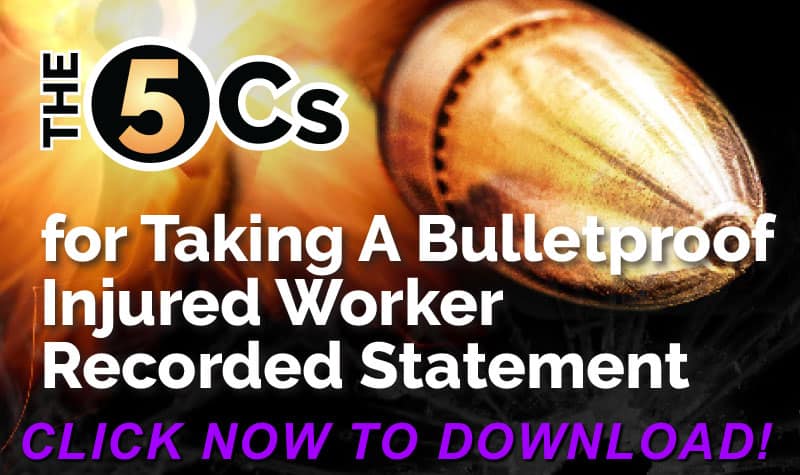
According to research, corporate culture can have a significant impact on an organization’s finances. Also, companies with strong, positive cultures have employees who are more engaged — in their jobs, their companies, and their own recoveries if they become injured. It all adds up to better outcomes for injured workers and stronger bottom lines for organizations. Understanding a few facts about corporate culture can make a tremendous impact on a company as a whole, and its injury management program in particular.
The Evidence
The relationship between organizational culture and corporate financial performance has been the subject of research for a number of years. One of the most dramatic studies came out of Harvard in the 1990s.
The researchers looked at the corporate cultures of companies and the potential impact on economic performance. Their analysis led them to compare 12 companies in particular that had positive cultures and 20 that did not. Over an 11 year period they found startling differences:
Positive cultures Weak cultures
Revenue growth 682% 166%
Employment growth 282% 36%
Stock price growth 901% 74%
Net income growth 756% 1%
While it has not been definitively determined that corporate culture alone has a significant impact on a company’s financial success, it is at least clear that it doesn’t hurt. As one of the two researchers of the study later said, “For now, my point is simply that corporate culture can contribute meaningfully to financial results, and many people do not give this fact enough attention.”
Click Link to Access Free PDF Download
“The 5Cs to Taking a Bulletproof Injured Worker Recorded Statement”
About ‘Culture’
There are a variety of definitions for the term ‘corporate culture.’ While basketball courts and ping pong tables in the lunchroom may come to mind, they don’t define corporate culture. Essentially, it boils down to the beliefs and behaviors that affect the way employees and management interact. It is not something tangible, but more of an attitude and way of doing things that permeates an organization.
While it is not something that can be seen or touched, it can be developed and intentional. It starts with the values, vision, mission and the day-to-day communications within a company. A strong, positive environment empowers employees. It makes them feel they are part of a team with a specific purpose. It motivates them to do well and go beyond simple expectations.
Motivated employees are contagious. Their positivity affects others around them and spurs better outcomes from the entire organization. However, the reverse is also true; a negative, weak culture results in unmotivated workers and can lead to a deterioration in productivity.
Cultural No-Nos
The first step in building a positive corporate culture is to assess the organization’s current culture. There are several clear indications that point to a poor corporate culture.
- High turnover. The overall average staff turnover rate for all industries is 16.7 percent, according to a study in 2015. Industries such as insurance and utilities had slightly lower turnover rates, while hospitality had a higher rate. A rate that is high indicates employees are unhappy in the environment.
- High-stress There are both physical and emotional symptoms of stress, but employers may not be privy to that information if employees are not forthcoming about it. One way to determine if a company has high-stress levels is to look at documents such as sick leave and workers’ comp claims information. Observing workers may indicate if there is high stress, especially high tensions among employees. Employers can encourage activities shown to reduce work-related stress, such as:
- Create an atmosphere that makes it easy for a worker to get exercise, such as discounted gym memberships or suggesting taking walks outside during breaks.
- Remind workers to use their vacation time, to avoid burnout and prevent stress from overwork.
- Make employees feel valued. Recognizing even small contributions from workers shows you care about them and can help reduce their stress levels.
- Lack of trust. While many supervisors and managers don’t consider this important, more than 90 percent of employees say it is vital to have a boss they can trust — or they will seek out new employment. Indications of a lack of trust include:
- Workers are unwilling to go the extra mile and only do the bare minimum.
- Complaining, finger-pointing and blaming with little effort to accept responsibility.
- High levels of competition to the extent that others’ ideas are blocked and pertinent information for good decision making is withheld.
- Policies and procedures are based on the idea that employees cannot be trusted.
- People don’t share ideas.
- Silo mentality, where employees do not collaborate
- Low participation in activities or wellness programs. Employees who don’t feel like part of a team are less likely to engage in events with their coworkers.
- Failing to report injuries. A quick check of the lag times between injuries and when they are reported will indicate whether workers feel safe or even understand they need to report workplace injuries.
- Punishing those who report injuries. Employees who are discouraged from reporting injuries do not trust their supervisors, managers, or their entire companies.
- Litigating most workers’ compensation claims. While some litigation does occur, greater than 50% of claims is a red flag.
- Failing to return to work anyone who is not at 100 percent. Company policies that keep workers out until they have fully recovered to their pre-injury status are harmful, to injured workers as well as the companies themselves. The longer someone is out of work, the less likely he will return. It causes disability mindset for the worker and increases costs unnecessarily and dramatically for employers.
Conclusion
Less than one-third of employees say they are ‘actively engaged’ in their work, according to a Gallop poll. These employees have fewer workplace injuries, are more active in their recoveries and return to work sooner. The remainder of workers say they are either ‘not engaged’ or ‘actively disengaged’ in work.
Getting more workers into the ‘actively engaged’ category starts by understanding the culture of an organization, then taking steps to improve it.

Author Michael Stack, CEO Amaxx LLC. He is an expert in workers’ compensation cost containment systems and helps employers reduce their workers’ comp costs by 20% to 50%. He works as a consultant to large and mid-market clients, is a co-author of Your Ultimate Guide To Mastering Workers Comp Costs, a comprehensive step-by-step manual of cost containment strategies based on hands-on field experience, and is founder & lead trainer of Amaxx Workers’ Comp Training Center .
Contact: mstack@reduceyourworkerscomp.com.
Workers’ Comp Roundup Blog: https://blog.reduceyourworkerscomp.com/
©2019 Amaxx LLC. All rights reserved under International Copyright Law.
Do not use this information without independent verification. All state laws vary. You should consult with your insurance broker, attorney, or qualified professional.












